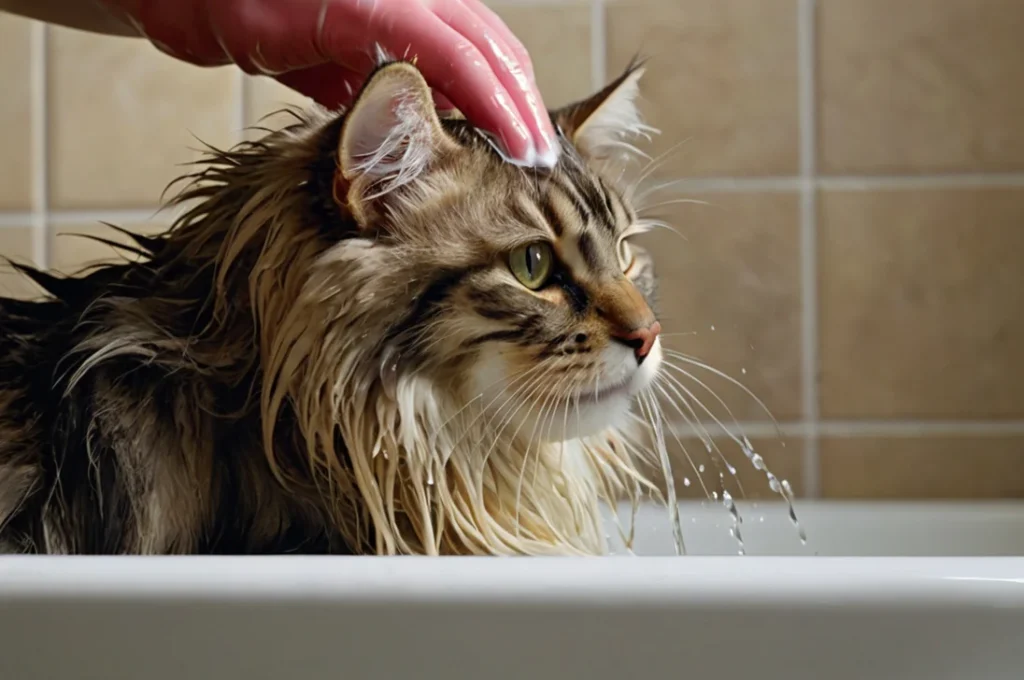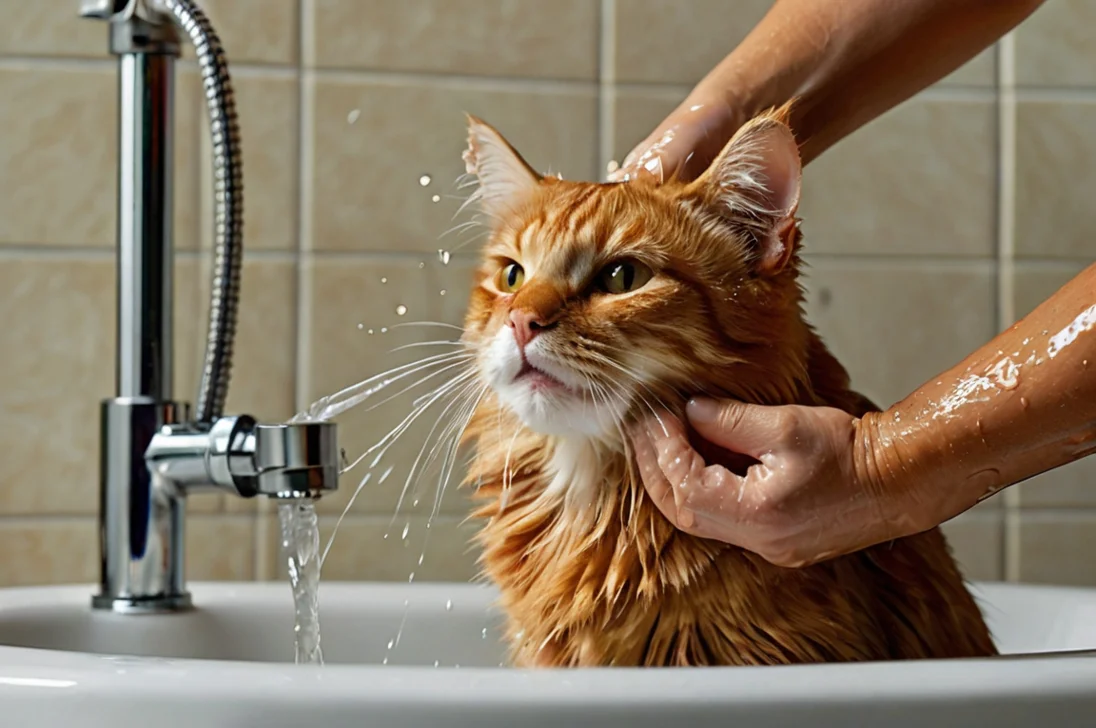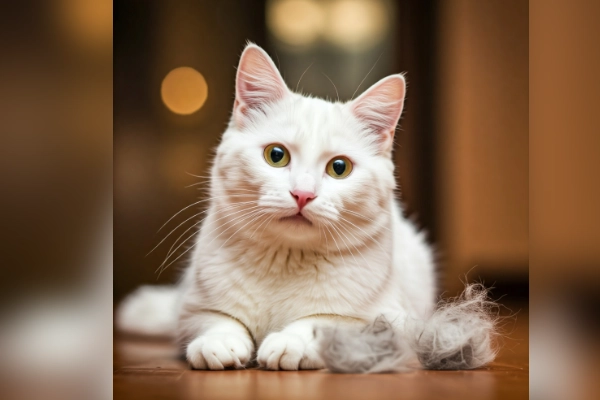Does your feline friend smell like a litter box? Are you drowning in fur tumbleweeds? If your cat’s odor and shedding have become unbearable, it’s time to face the truth: you’re not bathing them enough. But fear not, cat parents! We’ve got the purr-fect solution to restore your furry companion’s fresh scent and silky coat.
Discover the secrets to finding the perfect bathing schedule for your cat’s breed in this blog post. Eliminate odors and enjoy a fresher, more pleasant home environment. Many cat parents have praised the positive effects of regular grooming, and now it’s your chance to see the amazing results for yourself. Prepare to uncover the secret to having a truly wonderful feline companion!
What are the factors that influence bathing frequency?
Several factors influence how often you should bathe your cat.
- Cat Breed and Coat Type
It’s important to consider your cat’s breed and coat type. Certain breeds with longer, denser coats, such as Persian or Maine Coon cats, may require more frequent bathing to prevent matting and keep their coats looking their best. On the other hand, short-haired breeds like Siamese or Russian Blues tend to be lower maintenance and may only need occasional baths. - Cat Lifestyle and Environment
Another factor to consider is your cat’s lifestyle and environment. Indoor cats that spend most of their time lounging around the house may not need as many baths as outdoor cats exposed to dirt, debris, and potential allergens. - Health Conditions
Additionally, if your cat tends to get into messes or has a medical condition that causes excessive shedding or oily skin, more frequent bathing may be necessary. It’s always best to consult with your veterinarian to determine the optimal bathing schedule for your feline friend based on their individual needs and circumstances.
General Bathing Guidelines

Most cats groom themselves well and usually don’t need bathing. Bathing every 4-6 weeks is usually enough for healthy cats. Longhaired breeds like Persians may need bathing every 2-4 weeks to prevent matting. Elderly or less mobile cats may also need more frequent baths.
If you notice dirt, debris, excessive dander, or an unpleasant odor in your cat’s coat, it’s time for a bath. Outdoor cats may need immediate bathing if they get into substances like mud or feces.
Cats with skin conditions may require medicated baths as prescribed by a vet. Pay attention to your cat’s grooming habits and coat condition to determine the best bathing schedule.
Preparing your cat’s bath time
Preparing for bath time is a crucial step in ensuring a successful and stress-free experience for both you and your feline friend. Gathering the right supplies and creating a comfortable environment can make a significant difference in your cat’s overall bathing experience.
- Assemble all the necessary items, including a mild, cat-safe shampoo, a sturdy litter mat or towel to prevent slipping, a cup or unbreakable pitcher for rinsing, and a soft, absorbent towel for drying. It’s also a good idea to have treats on hand to reward your cat for their cooperation.
- Get the bathing area ready by blocking off any possible escape routes and making sure it is a cozy, well-lit environment.
- Groom your cat beforehand to remove any loose hair or mats, as this will make the bathing process smoother and more effective. Additionally, it is important to trim your cat’s nails beforehand to prevent any scratches while bathing them.
By taking these preparatory steps, you create a calm and organized environment, minimizing stress and making bath time a more positive experience for your feline companion.
Addressing Common Bathing Challenges
Addressing typical bathing obstacles. is crucial for ensuring a safe and stress-free experience for both you and your feline friend.
One of the primary concerns is dealing with your cat’s stress and anxiety, as many cats find the bathing process overwhelming. To ease their discomfort, it’s essential to create a calm and reassuring environment.
Start by introducing your cat to the bathing area gradually, allowing them to explore and become accustomed to the surroundings. Additionally, use positive reinforcement techniques, such as offering treats and praise, to associate the experience with something positive.
Handling difficult cats can be another obstacle, especially for breeds known for their independent or spirited personalities. In these cases, patience and proper restraint techniques are key. Consider enlisting the help of a second person to gently hold your cat while you focus on the bathing process.
Remember, forcing a bath on an overly distressed cat can lead to injury or further aversion to the experience. If necessary, consult a professional groomer or veterinarian for guidance on safe and effective methods for bathing challenging felines.
Alternative Grooming Options
For cat owners seeking alternative grooming options, dry shampoos and professional grooming services can be excellent choices.
Dry shampoos are a convenient solution for quick touch-ups between baths, helping to absorb excess oil and refresh your cat’s coat without the need for a full water bath. However, it’s essential to use only products specifically formulated for cats, as human dry shampoos may contain ingredients that could be harmful if ingested during grooming.
Professional grooming services offer a comprehensive approach to maintaining your cat’s coat and overall hygiene. Experienced groomers have the knowledge and tools to properly bathe, brush, and trim your cat’s fur, ensuring a thorough cleaning and grooming experience.
Additionally, they can provide expert advice on grooming techniques specific to your cat’s breed and coat type, helping you establish an effective grooming routine at home. While professional grooming services may be more costly, they can be a worthwhile investment for cat owners who prefer convenience or lack the necessary skills for intricate grooming tasks.
Final Words
In conclusion, a regular bathing routine isn’t just a luxury but a necessity for many cats, and the benefits extend far beyond mere aesthetics. By adopting a consistent grooming schedule tailored to your cat’s specific breed, you can significantly reduce odors and shedding, ensuring a fresher environment for both you and your feline friend.
You’ll not only enhance your cat’s comfort and health but also savor the peace of mind that comes from a clean, happy home. Don’t let unwanted smells and clumps of fur detract from the joy your cat brings into your life.
Take the first step today towards a more delightful living space and a happier feline companion—commit to a proper bathing routine and watch the transformation unfold! Start your journey to a fresher home and a healthier cat now!




